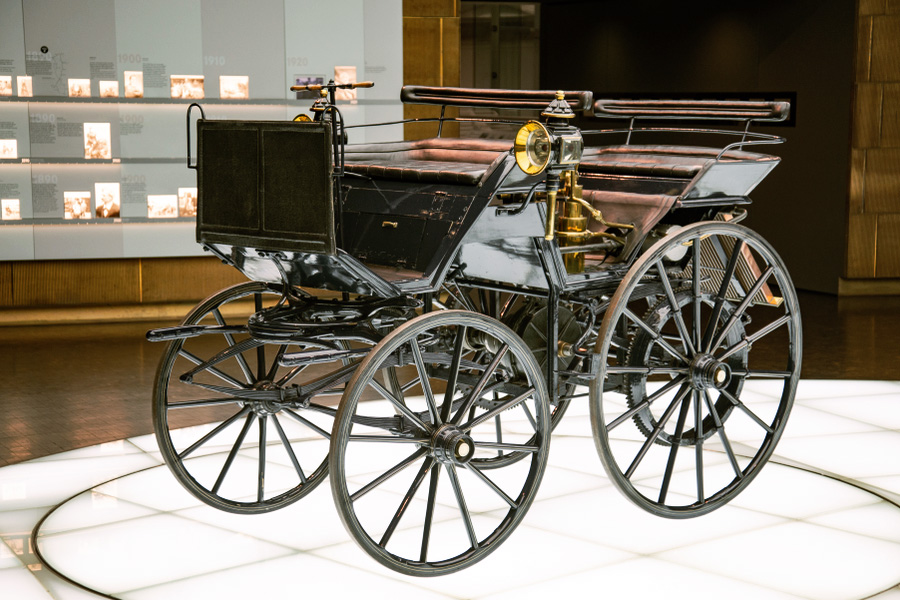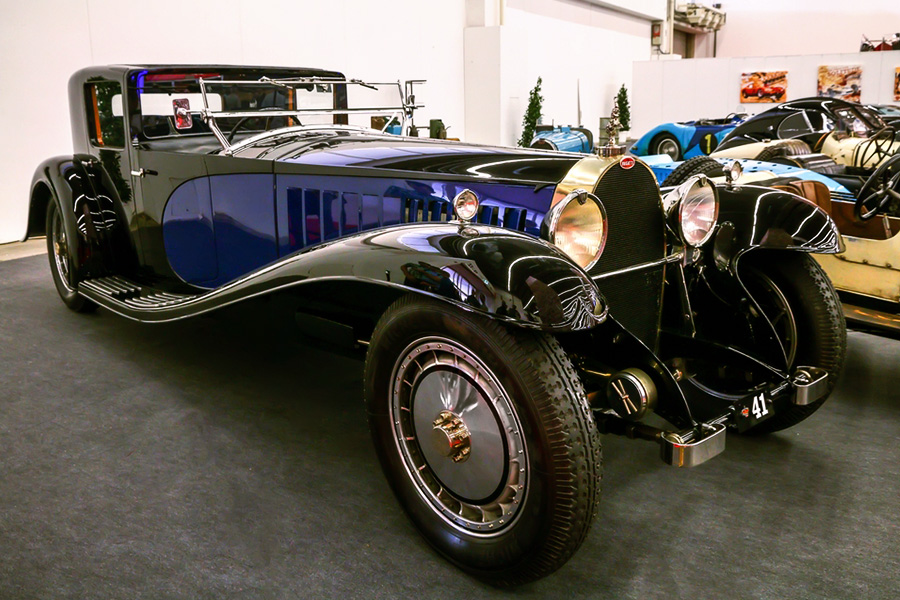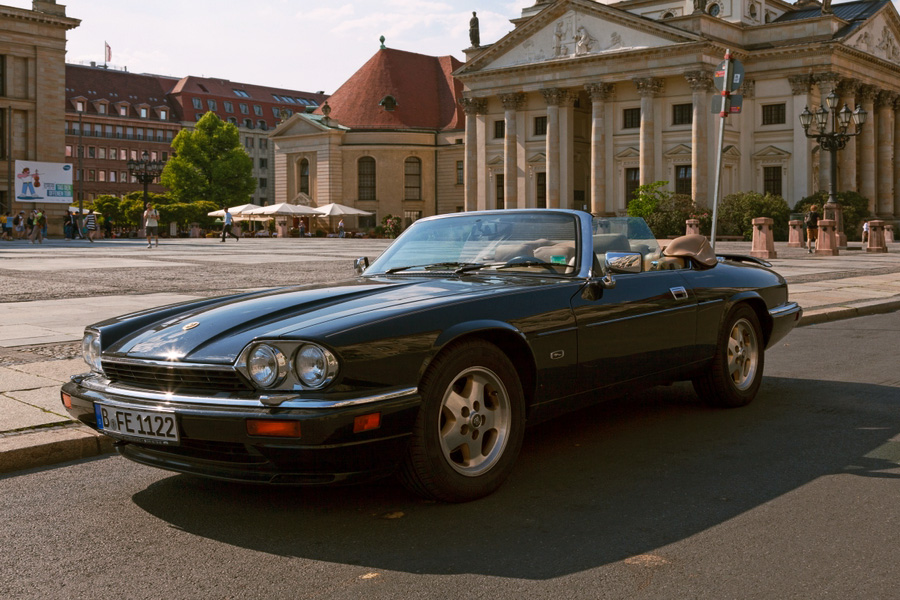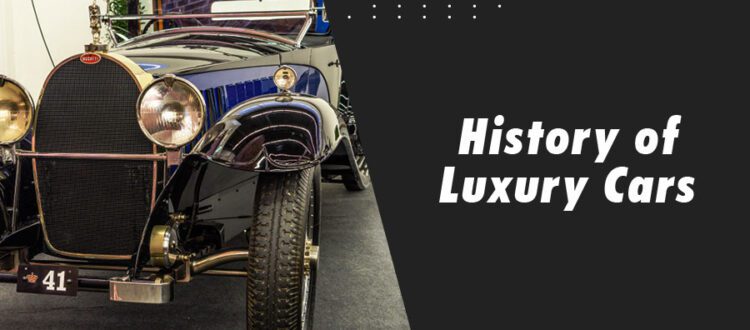History of Luxury Cars
Luxury cars have come a long way to be what they are today. Their elegance and exceptional design make them some of the most desirable cars in the auto industry. But what is the history of luxury cars, and what were the most important models over the years?
Read on as we take you on a journey through time and into the world of luxury and refinement.
History of Luxury Cars
Luxury cars have undergone several changes due to technological development and market demand. However, regardless of their challenges, car manufacturers created iconic models that will be remembered for their design, comfort, and performance.

Source: shutterstock.com / Photo Contributor: S.Candide
Early history of luxury cars
The beginnings of luxury cars can be traced back to the 1900s when horseless carriages appeared. In fact, having a vehicle at that time was a luxury, so these cars were also considered luxurious. Usually, these vehicles were custom-made by wealthy families who wanted a more comfortable ride and something different from other modes of transportation.
This period also marks the beginning of the automobile industry and the race to create the perfect luxury car model for the public. During this period, the Daimler Motor Car from Daimler-Motoren-Gesellschaft (DMG) was presented, which is considered the first luxury car in the world.
This is also the period when the brands that we know today were formed – Mercedes Benz in 1883 and BMW in 1916. Such brands are pioneers in the automotive industry that will raise the use of cars to a new level.
In addition to such brands, it is worth mentioning Rolls-Royce, which produced its luxury car in 1904. Other famous brands that marked this era are Bentley, Duesenberg, and Bugatti.
Golden age of luxury cars
The 1920s and 1930s are considered the period of the golden era. Namely, during this period, cars were not only a means of transportation, but attention was paid to all the details that define the luxurious character of the owner.
Unlike their predecessors, such cars were characterized by much more complex designs, powerful engines, and unique interiors. During this period, some brands strengthened their positions as creators of exceptional cars that will be role models for future car manufacturers.
In addition, this was the period when Chrysler, Chevrolet, and Lincoln presented the first luxurious models of cars that would slowly conquer the auto market.
As models that marked the golden era, we would mention the Bugatti Type 41 Royale, Rolls-Royce Phantom, and The Packard Series by Packard.

Source: shutterstock.com / Photo Contributor: Art Konovalov
Post-war era
After World War II, challenging times arose for the automotive industry. Namely, in the post-war period, there was a reduced demand for luxury vehicles due to the emergence of the economic crisis. But as the economy recovered, luxury cars became popular again, and so did their demand.
In addition, in the 1950s and 1960s, brands such as Jaguar, Mercedes Benz, and Cadillac took a significant place.
It is noteworthy during this period that luxury cars experienced a revolution in terms of design. Most cars produced in the post-war period had futuristic features, and most models had recognizable lines.
Luxury car models that marked this period are the Mercedes-Benz 300SL and Cadillac Eldorado, which paved the way and set higher standards for luxury cars with their exceptional appearance and design.
The 1980s and 1990s
While the 1960s were the period when the future of luxury cars and their transformation was hinted at, the 1980s were when such concepts became reality. During this period, car designers began to think in terms of driving dynamics and performance in addition to aesthetics.
If in the past the definition of a luxury car was elegance and luxury, this period signifies compactness of aesthetics and performance. While some manufacturers were more oriented towards luxury and technology, others emphasized performance.
The Mercedes-Benz S-Class appeared during this period, which was synonymous with top technology and design. On the other hand, the manufacturers of BMW and Jaguar offered compact models such as the Jaguar XJ and the BMW 7 series, which had impressive performance in addition to the luxurious experience.

Source: shutterstock.com / Photo Contributor: BreizhAtao
Luxury cars today
Luxury cars occupy a special place in the world of cars today. With the advancement of technology, such cars are becoming more economical, more elegant and with higher performance. Therefore, in the following, we will see what is current in luxury cars and what defines their beauty:
Technology
Unlike in the past, when cars had limited functions, today’s luxury vehicles are technological marvels. Their interiors are enriched with an infotainment system, semi-automated driving functions, and touch screens.
With most brands like Rolls Royce, in addition to these functions, they are constantly working on new technologies that will raise the driving experience to a new level.
Sustainability and eco-awareness
We live in an era where pollution is a major global issue. Many car manufacturers are developing eco-consciousness by integrating ecological and modern materials into their models. While many were skeptical that sustainability and luxury could coexist, many car manufacturers have proven otherwise.
A personalized experience
Luxury carmakers have upped the ante with the personalized experience option. Thus giving their customers the freedom to customize the vehicles and make them according to individual needs.
Namely, there are countless options, such as materials, infotainment systems, exterior design, etc. In this way, the definition of luxury acquires an even more inclusive quality.
Performance
Performance and power have always been associated with supercars and sports vehicles. However, while such a feature is inherent in supercars, high performance should not be overlooked in luxury cars.
Although in the past luxury cars were equated only with impeccable interior and style, today, many luxury car models are also characterized by high performance. When discussing the balance between performance and luxury, the Mercedes-Benz AMG GT 63 is worth mentioning. With a 4.0-liter V8 biturbo engine and 630 hp, this luxury model is one of the most powerful luxury cars in the world.
The future of luxury cars
So, what is the future of luxury cars? The future of these cars depends on how technology and trends evolve in the coming years. But for now, many manufacturers are placing a strong emphasis on promoting a healthy environment and increasing eco-awareness.
Taking sustainability and eco-awareness as a starting point, many manufacturers, such as Tesla and Porsche, have already introduced their electric luxury cars that blend elegance and performance.
We should also not forget that autonomous driving contributes to additional comfort and driving enjoyment. Such integrated systems allowing for autonomous driving and automatic parking are becoming more common in luxury car models.

Source: shutterstock.com / Photo Contributor: canadianPhotographer56
Conclusion
After seeing the history of luxury cars, we can conclude that these cars have gone through various transformation periods. Although in the beginning it was a luxury to own a car, today exotic cars have a special place in the automotive industry.
In addition to the elegance of modern materials, these cars are not far behind in terms of performance. So, what is the future of such cars and what to expect from them, remains to be seen.






